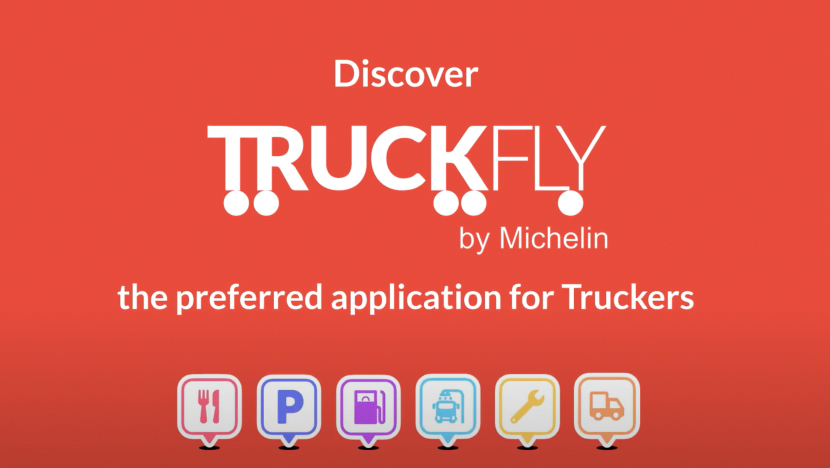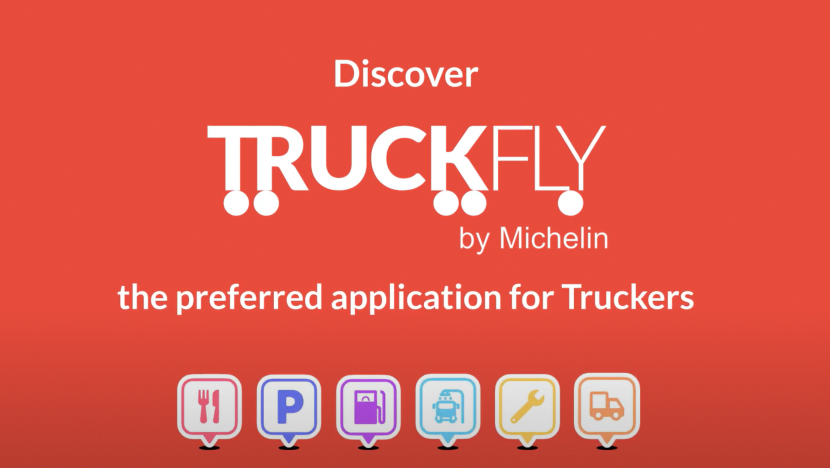Being a truck driver can be challenging. Truckfly’s CEO, Stéphane Rabiller, explains how its app is improving the daily lives of over 330,000 truck drivers.
IRU’s latest driver shortage survey found that over three million truck driver positions are currently unfilled in 36 countries, an already grim figure which is projected to double by 2028 without significant action.
The report also features best practices and measures implemented by road transport associations and companies as well as governments to make the profession more accessible and to attract more talent.
Here’s how Truckfly is improving truck drivers’ working conditions.
What are the key challenges that Truckfly is tackling?
Truckfly by Michelin is a community app that helps truck drivers find the best points of interest on the road, such as parking spots, restaurants, service stations, showers, toilets, etc. More than 80,000 points of interest across Europe are listed on the app.
Truckfly also helps drivers find jobs through a dedicated platform.
How many drivers are using the app?
More than 330,000 drivers are using the app. A total of 9% of them are women, which is two to three times higher than the market average. This is explained by the sense of safety that Truckfly provides through information and reviews on the points of interest.
The age distribution varies by country. In France, 62.7% of users are over 45 years old (with 1.5% over 65), 28.2% are between 25 and 44. Only 9.2% are under 25 years old.
What information is available on the app?
The app provides a wealth of information on parking lots, restaurants, service stations, delivery points, doctors dedicated to drivers, truck wash stations, garages and supermarkets. For each of them, the app offers tailored details, such as showers, toilets, menu prices, fuel prices, opening and closing hours.
Since the app is community-driven, the data is provided by the drivers themselves, which we verify to ensure their accuracy.
Where did the idea for the app and its community features come from?
The idea for the app and its community features came from the realisation that driving a truck is a challenging profession. We wanted to support drivers on a daily basis to make their lives more comfortable.

What feedback have you received from drivers and companies?
Truckfly is extremely popular among drivers, as evidenced by its ratings on download platforms. We often meet drivers at various events who thank us for the app, for making their daily lives easier.
We have recently started to support companies, mainly in recruiting drivers. To this effect, we have developed tools, such as job postings, a specialised CV database and employer branding tools. Clients who have subscribed to this solution greatly appreciate the service provided as it is unique on the market today.
It allows them to build and highlight their company brand and attract suitable candidates more efficiently. This can be especially useful for small and medium-sized enterprises to facilitate and improve driver recruitment.
As the tool is designed for truck driver jobs, drivers can easily search for a job offer that better matches their needs. They are able to filter by different criteria: type of route (national, international, regional, urban, etc), overnight/returning home, contract type, location, and then apply online for the job directly via the app.
What has been your biggest takeaway since launching the app?
Turnover is high in the truck driving profession. According to surveys we have conducted, it is as high as 30 to 35% per year, meaning that companies constantly need to recruit.
Moreover, there are relatively few innovative solutions for recruiting drivers. General job platforms exist but none are specifically designed for the truck driver profession. In addition, companies have relatively little time to recruit drivers as the market is so competitive. It is therefore crucial to save time.
That is why we created our own driver recruitment platform, allowing recruiters to filter candidates by type of drivers and target the right ones for them (for example, a driver licenced to handle dangerous goods, or someone interested in national, regional or international routes).
Based on the lessons you have learnt, what would you advise other companies looking to implement similar solutions?
In the current context, we would recommend that companies remain open to new ways of recruiting. We would stress the importance of employer branding. Today, companies that stand out are the ones that know how to attract prospective drivers.
To reduce turnover, it is necessary to share the same values and show what it’s like working in the company. Companies need to listen to their drivers and provide the most appropriate and well-maintained equipment to them along with a healthy and reassuring work environment, so they feel valued and appreciated on a daily basis.
More solutions implemented by governments and road transport associations and companies – such as ASTIC, CEVA Logistics and Scania – to improve the accessibility and attractiveness of the profession are available in IRU’s 2023 Global Freight Driver Shortage Report.
The report, which is based on a survey of more than 4,700 trucking companies in the Americas, Asia and Europe, representing 72% of global GDP, includes sections on:
- The impact of economic trends
- Driver shortages
- Current level of shortage
- Demographic trends
- 2028 forecast
- The profession’s accessibility and attractiveness
- Barriers closing off the profession
- Solutions and best practices



